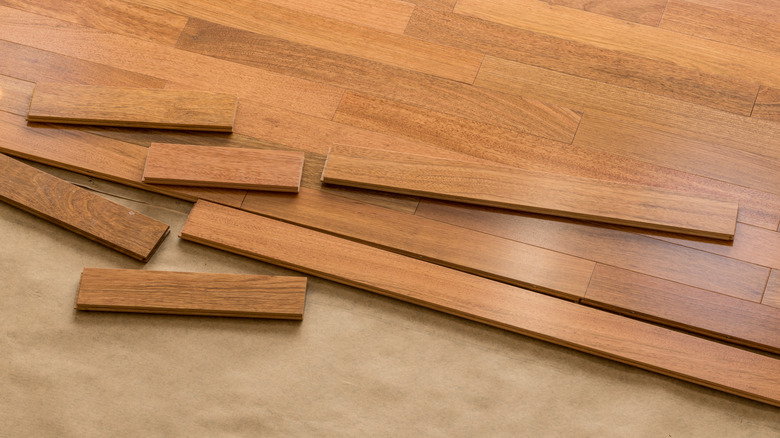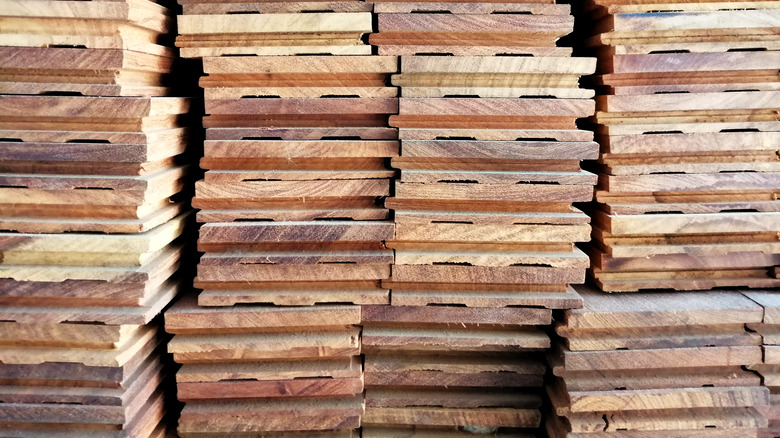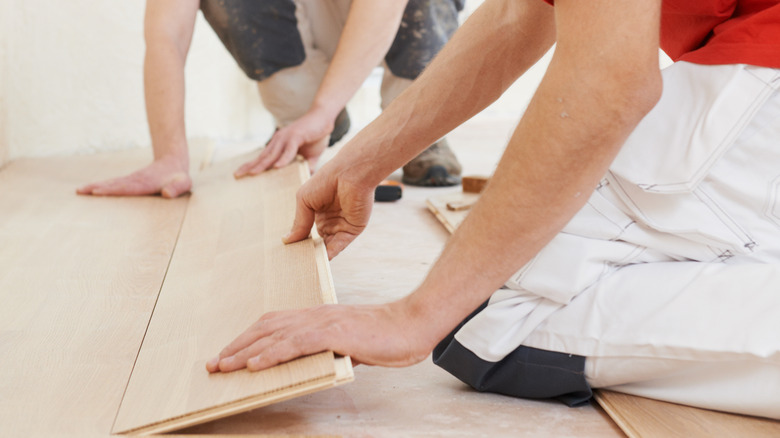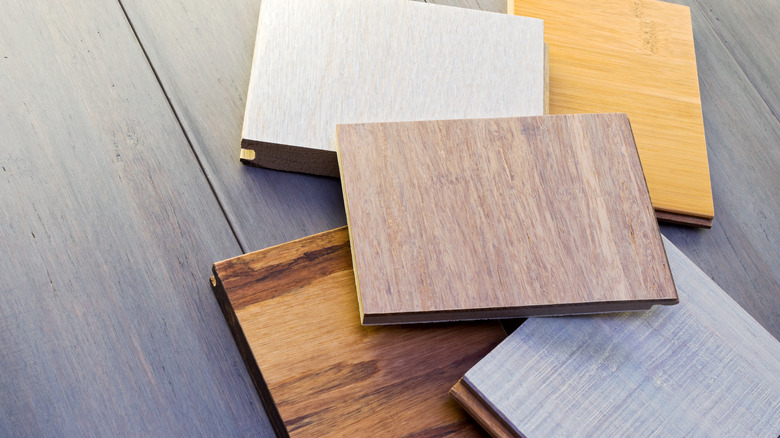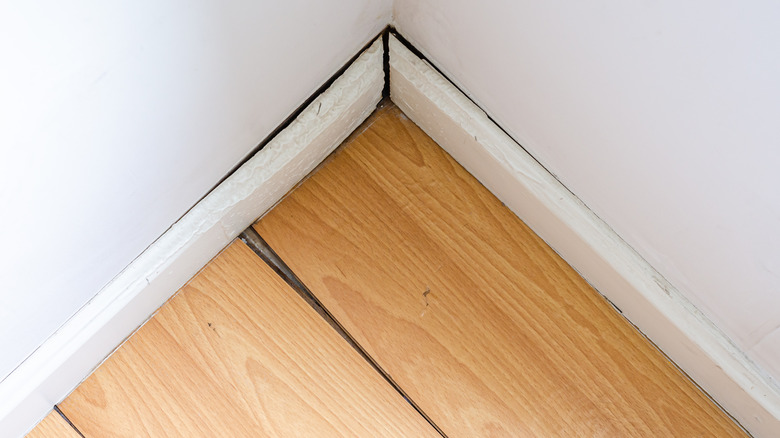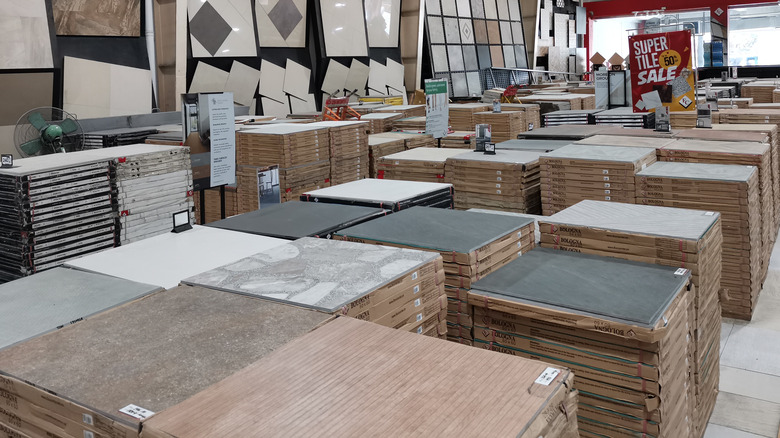What Is Tongue And Groove Flooring?
If you are a beginner at home renovations, tongue and groove flooring might be something you want to look into. In most American homes, the hardwood floors would have been installed using the tongue and groove method. According to Flooring First, it is the standard mode of installing wood flooring, and the way it works is simple. Each floorboard has two elements — the protruding and concave pieces, known as the tongue and the groove, respectively. These two features make the boards fit perfectly into each other, almost like puzzle pieces. While most wooden floors have visible nails, tongue and groove do not, which means a more effortless and safer installation process as well as a clean and polished look.
Although simple and pretty straightforward, tongue and groove flooring might not be for you, or if it is, there are things to know and keep in mind before heading to the home improvement store. Much like anything, there are pros, just like there are cons, as well as right and wrong ways to install them. So, is tongue and groove flooring right for you? Read on to answer your question.
What are the different types?
Choosing a type of flooring for your home can be challenging due to the number of choices available, but the battle is half won once you settle on the tongue and groove variety. This is because only solid hardwood and engineered hardwood are typically used to create this flooring option, according to 50 Floor. While both can come in various colors, grains, and finishes, they have some differences that could sway you towards one instead of the other. Nonetheless, the style of your home will likely influence your decision here.
Solid wood is made from a single piece of wood and is therefore very uniform and clean looking. It will usually be cut pretty thick, which means it can be sanded down quite a few times to look precisely how you want. It is then coated with a protective layer. Engineered wood, on the other hand, is made by bonding layers of wood together with adhesives under high pressure and heat. It is usually stronger and more resistant to humidity than solid wood; however, it is said to be possibly dangerous due to the emission of certain chemicals.
How to install
Tongue and groove flooring can be installed in one of two ways. You can choose to nail or staple your flooring down, or you can install it as a floating floor, meaning that the floorboards will only be glued together and not attached to the subfloor. In both cases, you'll want to put an OSB or plywood subfloor on top of the concrete. Although installing flooring directly on a concrete slab is possible, it's not recommended. You'll then want to situate your underlayment (red rosin and asphalt paper are great options) and secure it with a staple gun. Now it's time to place your floorboards where you want them.
According to Extreme How-To, there should be around ¼ inches between every board and the wall to make room for expansion. You can now choose to nail or staple all the boards to the subfloor on the tongue side. Place the nail or staple at a 45-degree angle where the tongue and board join, so the fastener will be hidden when the groove of the other board covers the tongue. However, if you want a floating floor, put away the nails and staples and get your glue out. You'll want to place glue on the top part of the groove and then tap the tongue into every glue-filled groove.
Pros and cons
For starters, tongue and groove flooring is the only type of flooring that will fit over joists, according to Ambience Hardwood Flooring. This is a huge benefit as a lot of homes are built on floor joists. Additionally, it is usually on the cheaper side of the flooring spectrum, which means it is both beginner and budget friendly. Tongue and groove flooring also appeals to the eye since it offers a clean finish. Finally, its floorboards fit together seamlessly, avoiding all hardwood floor complications such as warping, shrinking, and loosening.
In terms of cons, the biggest is that tongue and groove flooring is pretty challenging to repair. Once installed, it's almost impossible to remove without breakage. This makes it a less desirable option if you tend to redo your house often or if you are only changing the floors for staging when selling a home. Additionally, tongue and groove flooring is usually delicate to handle as the tongue part tends to be pretty fragile, breaking off if not handled properly.
Mistakes to avoid
A few things are noteworthy if you've decided that tongue and groove flooring is right for you. Ideally, since it is hard to repair and remove, you are going to want to do things right the first time around to avoid any future complications. Firstly, when buying, remember that the price isn't for nothing. The cheaper your boards are, the less durable they also will be. Make sure you try and find a reasonable middle ground between quality and bargain rate if you are on a budget. Secondly, District Floor Depot suggests you clear the area — working around the furniture will yield satisfactory results.
As mentioned previously, do not skip adding an underlayment. Although it might seem like an unnecessary additional step at first, adding one will prevent squeaking and bends in the future as well as protection from water damage. Finally, to ensure a clean and polished finish look, we recommend you remove your baseboards for the new flooring to fit correctly underneath them and close to the wall. You can put the same baseboards back once the flooring is done.
Where to find it and how much it costs
Tongue and groove flooring can be found in almost any home improvement store. Chances are you'll be met with all the options, from solid to engineered wood, in any color, finish, and size you want. If you need to take a closer look before making a decision, we do recommend going to a bigger store as you'll have the most options to browse from.
In terms of cost, it can vary quite a bit. According to Flooring Clarity, tongue and groove flooring prices range from $6 to $12 per square foot. It sometimes might go as low as $2 to $3, but that might not be the ideal choice if you're looking for high-quality options. The price of these boards will generally vary due to factors like wood species mostly. Premium solid hardwood can go all the way up to $25 per square foot, whereas engineered wood is more budget-friendly.
